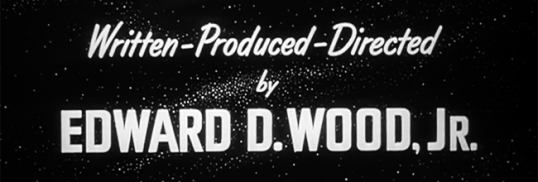
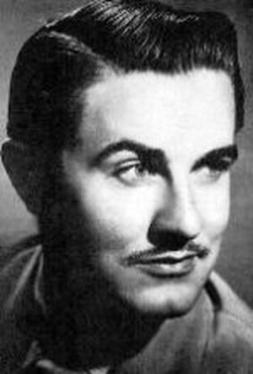 Edward D. Wood Jr is a name that will stand the test of time in the film
Edward D. Wood Jr is a name that will stand the test of time in the film
community from the sheer awe of what this man was able to create. Don’t get the wrong impression, Ed Wood wasn’t a cinematic genius, who made films that would make audience members ponder the wonders of the universe. No, he made some of the worst films ever made, and has been been the honor of being known as the “worst filmmaker of all time.” That is quite an accomplishment. But if he was so bad, why do people still talk about hi to this very day? That is honestly a good question. I like to look at Ed Wood as a terrible car accident. No matter how bad the accident might be, you can’t find a way to look away.
Let’s start by looking at where Ed Wood came from. Ed Wood was from New York, where his father was a janitor for the postal service. To say he had a normal childhood would be anything but the truth. At the time he was born, his mother desperately wanted a daughter, but other forces prevailed, and she was graced with a son. This didn’t deter her in any way from dressing young Edward in girls clothing, to help fill that void that was left somehow. This had a long lasting impact on Edward, and all the way up to his later life, he was a heterosexual cross-dresser. At age 12, Edward was given a camera on his birthday, and I guess you could say that’s where the history began. But there is more to the story.
Ed Wood decided to join the service shortly after the attack on Pearl Harbor, and he joined the U.S. Marine Corps. He was a member of the 2nd Defense Battalions, which is where he spent his entire military career. Wood reached the level of Corporal before being discharged from the service. During his time in the military, he lost his two front teeth, and was shot multiple time during battle. He later went on record stating that several time while in battle, he was wearing women’s undergarments. Don’t ask, don’t tell I guess.
But after his time in the service, Ed Wood always remembered how much he loved the movies, and how badly he wanted to make movies. So he go jobs on studio lots, doing odd jobs. He even directed commercials, TV pilots, and few other odds and ends along the way. He found himself in love with the editing bay, going over all the stock footage the studio had acquired over the years.Shortly there after, Ed had the opportunity of his lifetime and was introduced to the legendary Bela Lugosi. That’s right, Dracula himself. There are many different views, as to how their friendship really was. Whether Ed truly thought of Bela as a friend, or was he using the elderly actor just to get in the door on the “cape tails” of Dracula. I tend to believe they really were friends.
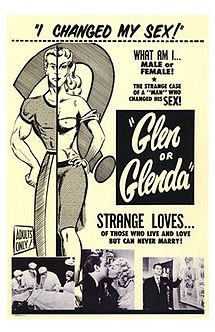 Now the madness begins. Ed was given the opportunity to direct a film based on the Catherine Jorgenson story…she was a transgender person who was in the headlines at the time. He took this opportunity to make Glen or Glenda, which he himself starred in. I guess him getting the chance to wear women’s clothing out in the open was to good to pass up. I have to admit, the movie is horrendous. And that’s the tale of the tape with his later films as well. They include Bride of the Monster, Night of the Ghouls, and the infamous Plan Nine From Outer Space. All these films were made on really no budget, and were intercut with that stock footage he loved some much. He once said, and the used the quote in the Ed Wood movie by Time Burton, “If someone gave me the opportunity, I could make an entire movie out of nothing but this stock footage.” That was more or less the case. He had semi-brilliant ideas and concepts, he just didn’t know how to execute them properly on set. He was a director that wasn’t worried or concerned. He wasn’t concerned about production or direction, he just wanted to shoot the scene, and move on to the next setup.
Now the madness begins. Ed was given the opportunity to direct a film based on the Catherine Jorgenson story…she was a transgender person who was in the headlines at the time. He took this opportunity to make Glen or Glenda, which he himself starred in. I guess him getting the chance to wear women’s clothing out in the open was to good to pass up. I have to admit, the movie is horrendous. And that’s the tale of the tape with his later films as well. They include Bride of the Monster, Night of the Ghouls, and the infamous Plan Nine From Outer Space. All these films were made on really no budget, and were intercut with that stock footage he loved some much. He once said, and the used the quote in the Ed Wood movie by Time Burton, “If someone gave me the opportunity, I could make an entire movie out of nothing but this stock footage.” That was more or less the case. He had semi-brilliant ideas and concepts, he just didn’t know how to execute them properly on set. He was a director that wasn’t worried or concerned. He wasn’t concerned about production or direction, he just wanted to shoot the scene, and move on to the next setup.
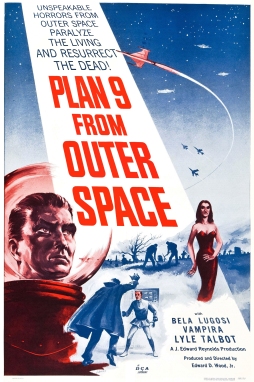 A good way to look at Ed Wood if you aren’t familiar with him, is that he’s
A good way to look at Ed Wood if you aren’t familiar with him, is that he’s
was the dollar store Roger Corman. They made the same types of films, just one had the talent to back it up. I don’t want to bash on Ed Wood because the world has been doing that for ages. I like his movies, I really do. Not that they are good, because they are dreadful…but because they are a part of cinema history, and as a filmmaker myself, they are an amazing blueprint as to what not to do.
I have to say, if you are someone who is into unique and off the way films, the library of Ed Wood films might be something that you should look into. Because like I said, as long as you know that they are garbage going into them, you should be able to see the humor and appeal that audiences the world over have been seeing for years. It’s the fans that have turned Ed Wood into a cult legend. But it’s his work that made the man the person he is today. So without further ado, R.I.P Edward D. Wood Jr. (The Greatest Worst Director of All-Time)
Till Next Time Kiddies…
-RJ
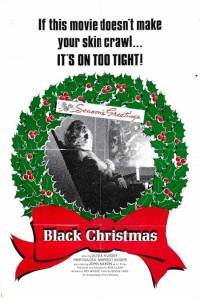 On December 11th 1974, a small Canadian horror film opened at the box office. It would create a horror sub-genre, lay the foundation for the modern slasher and influence several other horror movies. With an initial run grossing over 4 million international on a $686,000 budget, gaining mixed reviews, it would grow to become a cult classic. That film was Black Christmas.
On December 11th 1974, a small Canadian horror film opened at the box office. It would create a horror sub-genre, lay the foundation for the modern slasher and influence several other horror movies. With an initial run grossing over 4 million international on a $686,000 budget, gaining mixed reviews, it would grow to become a cult classic. That film was Black Christmas.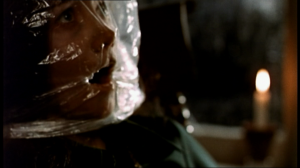 Production began in early 1974 in Toronto, Canada. There were a few set backs that director Bob Clark and his crew had to overcome. Gilda Radner was set to play Phyl but had to drop out a month before filming due to her Saturday Night Live commitments. The original Lt. Fuller, Edmond O’brien, left at the last minute from failing health problems. Both actors would be replaced by Andrea Martin and John Saxon respectively. Over the course of eight weeks, filming proceeded not only in Toronto but in Ontario and around Annesley Hall, a national historical site. Due to the light snowfall, several exterior scenes were created with the use of a foam material provided by the fire department. Director of Photography, Albert S. Dunk, shot the film with 35mm cameras. For the opening sequence of the movie, Albert mounted the camera to his back and climbed the house’s trellis himself. Other unique techniques were used during post production. To help aide in making the obscene phone calls sound more demented, actor Nick Mancuso stood on his head during the ADR sessions. Carl Zitrer, the film’s composer, used cutlery and combs on the strings of a piano to warp the sound. He recorded on audio tapes so he could slow down the speed.
Production began in early 1974 in Toronto, Canada. There were a few set backs that director Bob Clark and his crew had to overcome. Gilda Radner was set to play Phyl but had to drop out a month before filming due to her Saturday Night Live commitments. The original Lt. Fuller, Edmond O’brien, left at the last minute from failing health problems. Both actors would be replaced by Andrea Martin and John Saxon respectively. Over the course of eight weeks, filming proceeded not only in Toronto but in Ontario and around Annesley Hall, a national historical site. Due to the light snowfall, several exterior scenes were created with the use of a foam material provided by the fire department. Director of Photography, Albert S. Dunk, shot the film with 35mm cameras. For the opening sequence of the movie, Albert mounted the camera to his back and climbed the house’s trellis himself. Other unique techniques were used during post production. To help aide in making the obscene phone calls sound more demented, actor Nick Mancuso stood on his head during the ADR sessions. Carl Zitrer, the film’s composer, used cutlery and combs on the strings of a piano to warp the sound. He recorded on audio tapes so he could slow down the speed.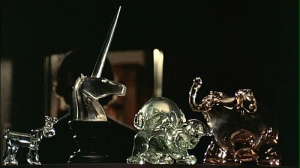 The sub-genre that Black Christmas is responsible for creating is the holiday-themed horror film. It was writer Roy Moore and Bob Clark’s intention that they would make horror movies that centered around different holidays. Their sequel was to be set on Halloween but development issues prevented this from happening. Bob eventually let his friend John Carpenter take over the idea for his own seminal horror film, 1978‘s Halloween. The highly successful movie would cement the idea into the mind of future filmmakers. Thus making movies such as Friday the 13th, My Bloody Valentine, New Year’s Evil, Mother’s Day and plenty others possible.
The sub-genre that Black Christmas is responsible for creating is the holiday-themed horror film. It was writer Roy Moore and Bob Clark’s intention that they would make horror movies that centered around different holidays. Their sequel was to be set on Halloween but development issues prevented this from happening. Bob eventually let his friend John Carpenter take over the idea for his own seminal horror film, 1978‘s Halloween. The highly successful movie would cement the idea into the mind of future filmmakers. Thus making movies such as Friday the 13th, My Bloody Valentine, New Year’s Evil, Mother’s Day and plenty others possible.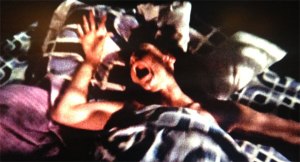 One of the elements that I love about Black Christmas is that it doesn’t feature over the top gore that is commonplace among most R-Rated horror films. The onscreen kills, though violent, aren’t drenched in crimson. What we get are murder scenes that show just how powerless the victims are in preventing their demise. Clare endures the slow, agonizing death of strangulation. Mrs. Mac, who sees the hook zipping towards her on the line, can’t get of the way in time. While in a drunken slumber, Barbara can’t fend off her attack with the glass unicorn. Even Phyl, though she is killed offscreen, is done in from behind in Barb’s dark bedroom. And if you’re in the camp that I am that Jess will indeed suffer a terrible fate at the end of the film, she will do so in a medically induced stupor.
One of the elements that I love about Black Christmas is that it doesn’t feature over the top gore that is commonplace among most R-Rated horror films. The onscreen kills, though violent, aren’t drenched in crimson. What we get are murder scenes that show just how powerless the victims are in preventing their demise. Clare endures the slow, agonizing death of strangulation. Mrs. Mac, who sees the hook zipping towards her on the line, can’t get of the way in time. While in a drunken slumber, Barbara can’t fend off her attack with the glass unicorn. Even Phyl, though she is killed offscreen, is done in from behind in Barb’s dark bedroom. And if you’re in the camp that I am that Jess will indeed suffer a terrible fate at the end of the film, she will do so in a medically induced stupor.